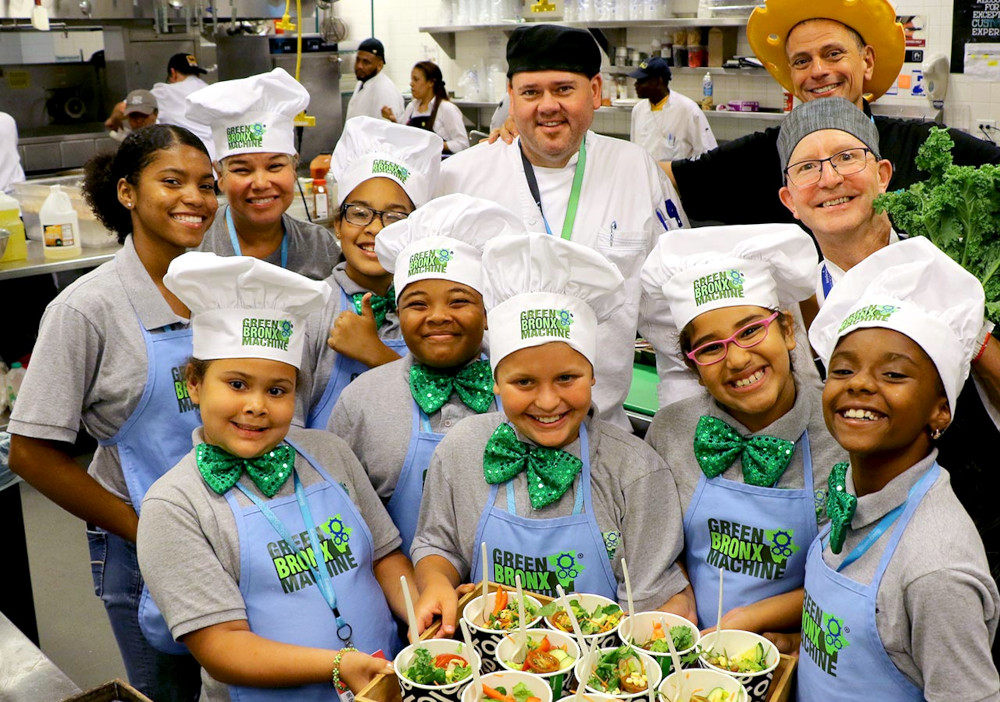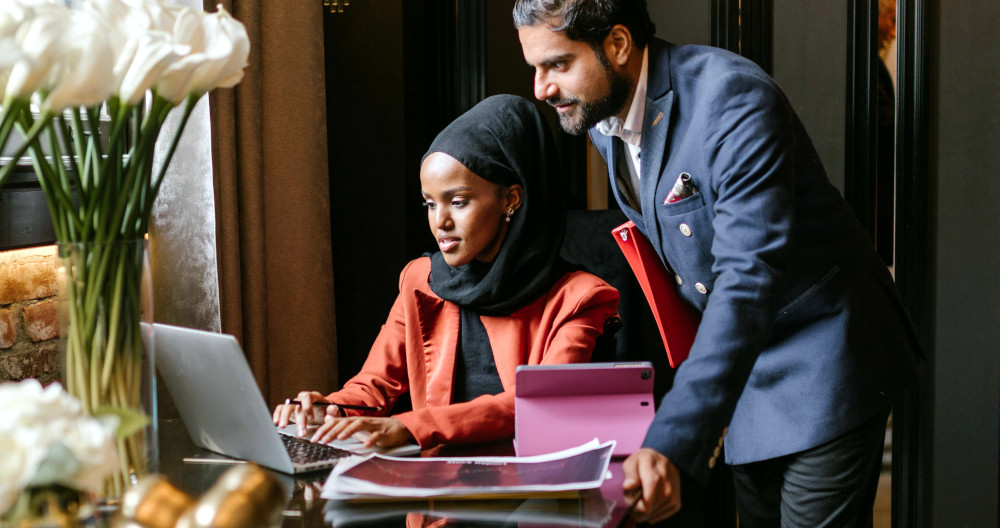At SB Brand-Led Culture
Change in
Minneapolis last week, leaders from a variety of industries and sectors
shared insights on their organizations’ efforts to maximize impact and
opportunities for the next generation of diverse, young talent.
Brands investing in education as a vehicle for social change
 Green Bronx Machine partners with Memorial Sloan Kettering Hospital to produce
400 bags of student-grown leafy greens and vegetables every month, which are
distributed locally to food insecure senior citizens who are recovering from
cancer and live in public housing. | Image credit: Green Bronx
Machine
Green Bronx Machine partners with Memorial Sloan Kettering Hospital to produce
400 bags of student-grown leafy greens and vegetables every month, which are
distributed locally to food insecure senior citizens who are recovering from
cancer and live in public housing. | Image credit: Green Bronx
Machine
This Thursday morning panel featuring leaders from tech, non-profits and
education highlighted work taking place in each field aimed at equipping the
next generation to thrive.
Ann Woo — Executive Director and
Head of Corporate Citizenship, Employee Engagement & Emerging Talent at
Samsung — and
MindSpark President & CEO Kellie
Lauth discussed how their
companies are each working to upskill and educate young
people pursuing careers in
Science, Technology, Engineering and Math (STEM).
“We work with thousands of brands — often as an intermediary,” Lauth said. "They’ll come to us
and ask for help to upskill girls to work in STEM careers. I tell them it is a
long-term commitment."
When asked about the current state of girls pursuing STEM
careers
in the US, she explained there is still work to be done: “A lot of schools
and corporations use STEM as a buzzword. Industry should drive STEM outcomes. In
places like Appalachia and our work with tribal communities, there is an
enduring effort in terms of educating teachers and upskilling potential workers.
Brands should know it is a long-term, deep-impact strategy.”
Phil Berry, IDSA — Director of the
Office of Sustainability at Pima Community College in
Tuscon, Arizona — discussed the need for more students to be literate about
climate issues given the projected temperature rise younger generations are
likely to see in their lifetimes. “For Generation Z or Gen Alpha, it could be as
much as a 5- to 7-degree increase,” he said.
Stephen Ritz, founder of Green
Bronx Machine — an educational program on a
mission to build healthy, equitable and resilient communities through inspired
education that boosts local food systems and 21st-century workforce development
— then shared a powerful message about the connection between education in
low-income communities and building community health: “The greatest lever for
equity in this country is education. Kids are getting fatter, sicker faster. Why
don't we grow food in every schoolyard in the country?” he asserted. Green Bronx
Machine’s new documentary, Generation
Growth, demonstrates a template for
low-cost, highly effective education around food and nutrition that can be
replicated in public schools across the nation.
The session ended with a key takeaway for brands to think about how to marry
their sustainability strategies with education. Lauth encouraged brands to
“think of education as a solid investment in their bottom line, and as a vehicle
for addressing more social challenges brands face, now and in the future.”
Elevating the next wave of diverse entrepreneurs, executives and leaders
 Image credit: RDNE Stock
Project
Image credit: RDNE Stock
Project
The next morning, a similarly engaging session covered best practices and
creative ways of investing to elevate new generations of diverse entrepreneurs
and leaders. The conversation featured panelists from across the business world
— including non-profits, the spirits and beverage industry, and consulting.
Moderated by Michelle
Benavides, Executive Director
of the International Society of Sustainability
Professionals (ISSP), two
main themes drove the discussion — investment strategies in support of
historically marginalized groups including Black and tribal communities, and how
to find and recruit more diverse talent.
Malcolm Ellis, Head of Diverse
Investments at Diageo, provided an overview of the
company’s $200M commitment over 10 years to cultivate the next generation of
Black entrepreneurs, executive leaders and founders within the spirits and
beverage industry. The investment includes two pillars — the first is providing
Black founders with funding, go-to market, brand marketing, finance and legal
capabilities; the second is HR-driven and aims to diversify the industry by
sourcing talent from Historically Black Colleges and Universities (HBCUs) and
HBCU alumni.
According to Ellis, the spirits industry does not accurately reflect the
consumers it serves — Black Americans represent 12 percent of consumers but only
~7 percent of the spirits labor force and just 2 percent at the executive
level. “We need to look like our consumers. There is a space for brands that
reflect my lived experience,” Ellis said.
Lola Bakare — CMO advisor,
inclusive marketing strategist and owner of be/co —
spoke about the need for companies to be more proactive when finding and hiring
more diverse talent.
“If people are telling me, ‘We don’t have a single Black woman on the team’ — if
we’re not going out of our way to level the playing field — then, what are we
really saying?” she said. “We can’t be waiting for perfection for people to have
these opportunities for communities that are underserved. There needs to be a
willingness to take a chance on this person even though they may not be
perfect.”
Lina Constantinovici,
founder and CEO of climate-tech accelerator Innovation
4.4, shared examples of her organization’s work
with tribal communities that exemplified the proactive approach Bakare
mentioned. “We’re working with Lakota and Dakota tribes. There’s such excitement
and energy among the younger generation who want to bring in renewable energy…
the desire is there,” she said.
Constantinovici spoke about another project, with the Seminole Nation of
Oklahoma, that involves repurposing wind turbine
blades. “There are 2,000 wind turbines that cannot be landfilled because of a
toxic chemical. By making a $10M investment in the recovery project, it unlocks
a $50M investment from the government,” she asserted.
After the panel addressed questions from the audience, Benavides wrapped up the
session by reminding attendees of the larger purpose behind the work that was
shared — and the impetus for companies to seek opportunities to intentionally
and equitably expand their reach. “The aim is to create a better future for
everyone,” she said.
Get the latest insights, trends, and innovations to help position yourself at the forefront of sustainable business leadership—delivered straight to your inbox.
Mara Slade is a seasoned communications professional having worked both in-house in sustainability roles and at top creative agencies including Edelman and Digital Kitchen. She has led corporate ESG reporting projects for a variety of Fortune 500 clients ranging from tech, retail, sustainable agriculture, consumer packaged goods, financial services, among others. She is a certified GRI reporter with an MBA from Presidio Graduate School in Sustainable Management.
Impact Manager, Purpose + Sustainability
Formerly working in the advertising world in Kansas City, Hannah Zimmerman has now married her past experience with her passion for sustainability. When she isn't chasing her four-year-old daughter or helping companies along on their sustainability journey through consulting, reporting, communications and certifications, she is working on her master's in Sustainability through Harvard.
Published May 20, 2024 2pm EDT / 11am PDT / 7pm BST / 8pm CEST